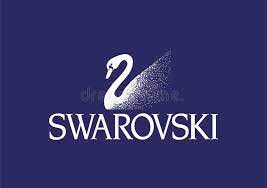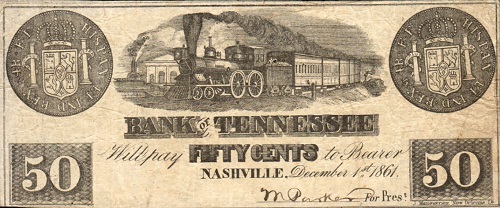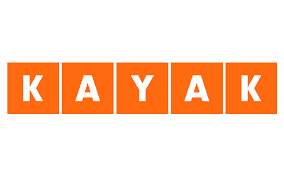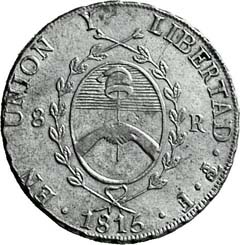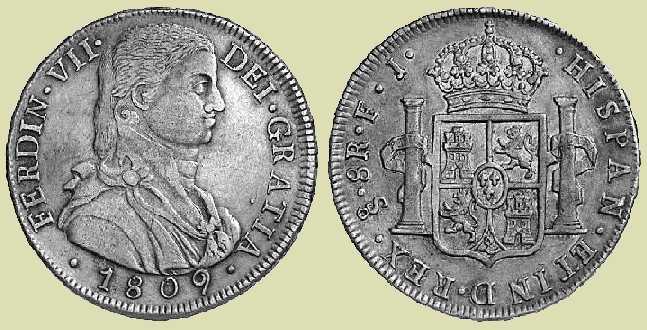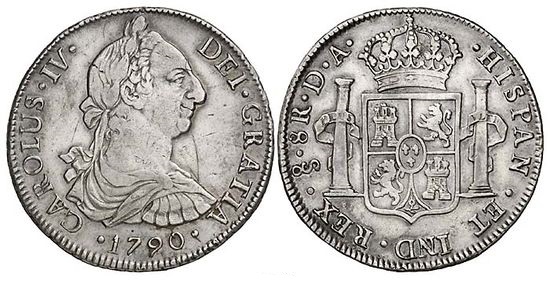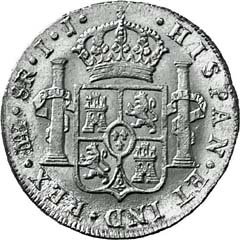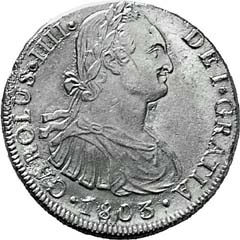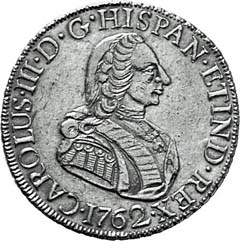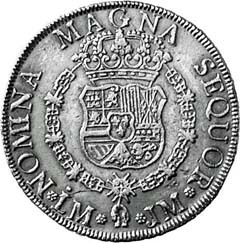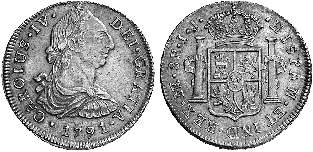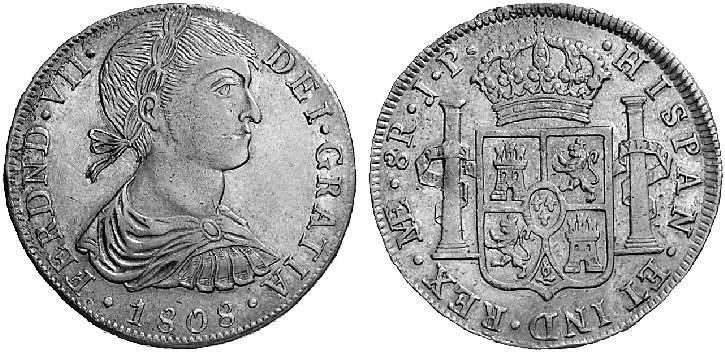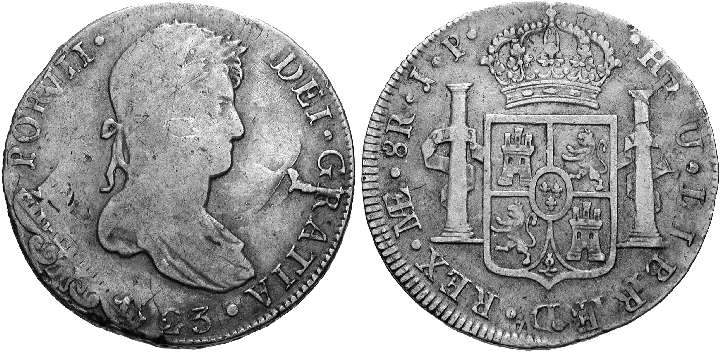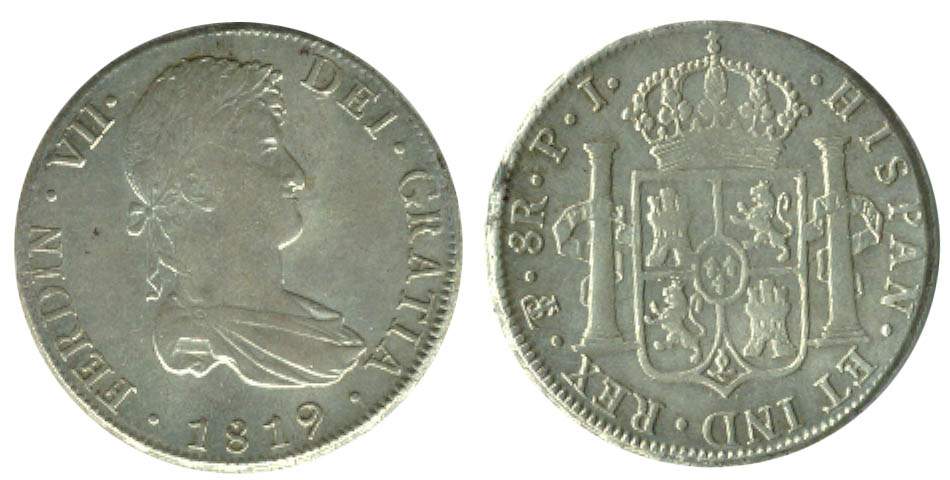American Revolutionary Coins Countermarked in Philippines
A collaboration of Marty Martinez
The circulation of the Philippines at the time of Spanish domination consisted of coin minted in other regions, mainly Potosi, Peru and Mexico, with the same denominations as in the rest of the colonies.
From the independence of the American colonies, there was a retraction in the circulating in this zone. For this reason should have appealed to a very curious policy: the reselling of currencies. Potosí, Peru and Mexico were alternated several times by Independents and Spaniards between 1810 and 1828.
1866
2 Pesos Isabel the Second by the Grace of God
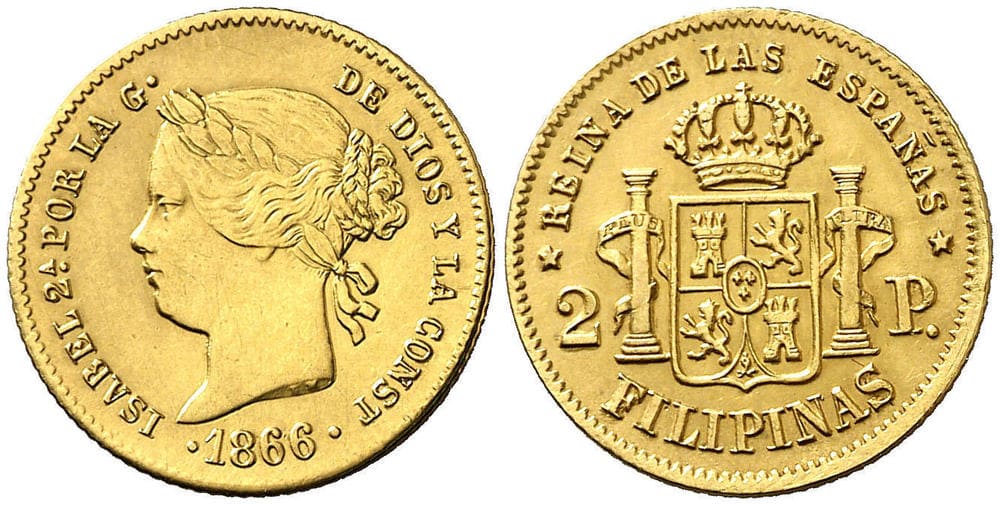
As a result, the independentist minted their own currencies (Potosi: Bolivia and Argentina), Lima (Peru) and Mexico. Apparently when the Spaniards occupied these places again, they also appropriated the new mints, some of which were sent to the Philippines by the Pacific route. Thus, circulated from 1828 Peruvian independence coins, Mexican and Bolivian in Philippine, with the Spanish denominations.
Circulated coins, were also circulated after 1828, which for different reasons, arrived on the island. It should be noted that the Spanish monetary system at that time was adopted by all American countries (including the United States and Canada). Also some countries of Africa, and it meant what today is the dollar-USA monetary system. Denominations of the currencies of the new countries were also made in Reals.
Peruvian Republic - Lima
Coins Resealed. by Fernando VII for its circulation in Manila (8 reales). resealed of 1828 on 8 reales of the Peruvian Republic, Lima, 1828, assayer JM
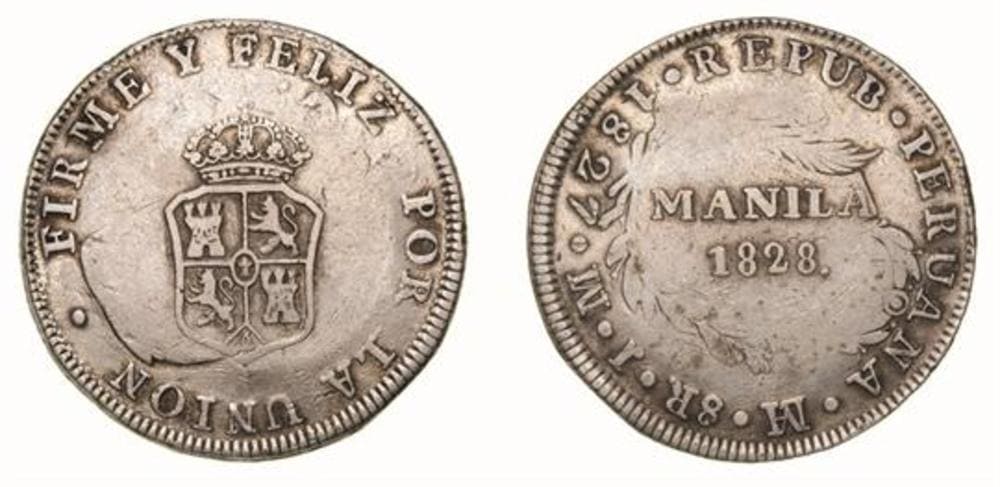
Republic of Chile
Chile Republic : Over 1 Peso 1834. Resealed by Fernando VII in Manila for its circulation in the Philippines (1834-7).
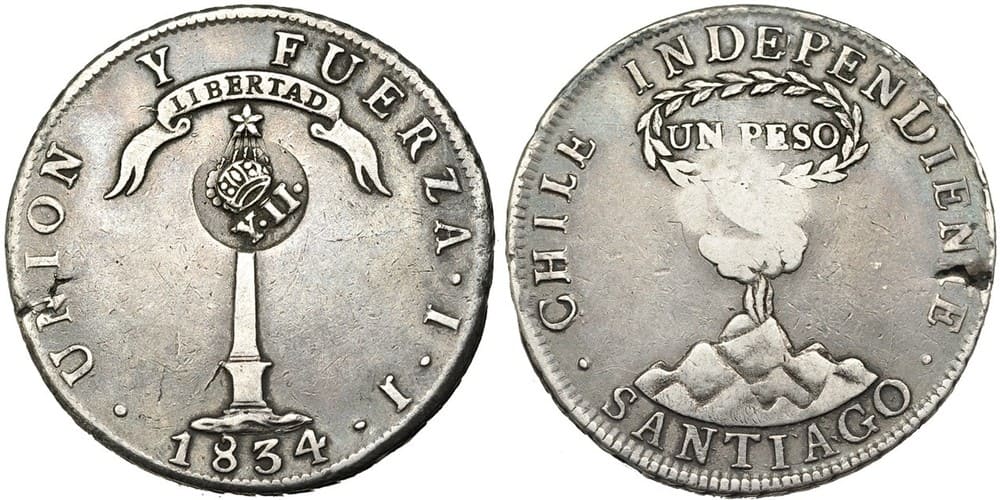
Republic of Peru - Lima
Philippine Currency 1833. Columns resealed. Republic of Peru. 8 reales. Lima. 1833. Resealed by Fernando VII in Manila for circulation in the Philippines (1832-4) assayer M
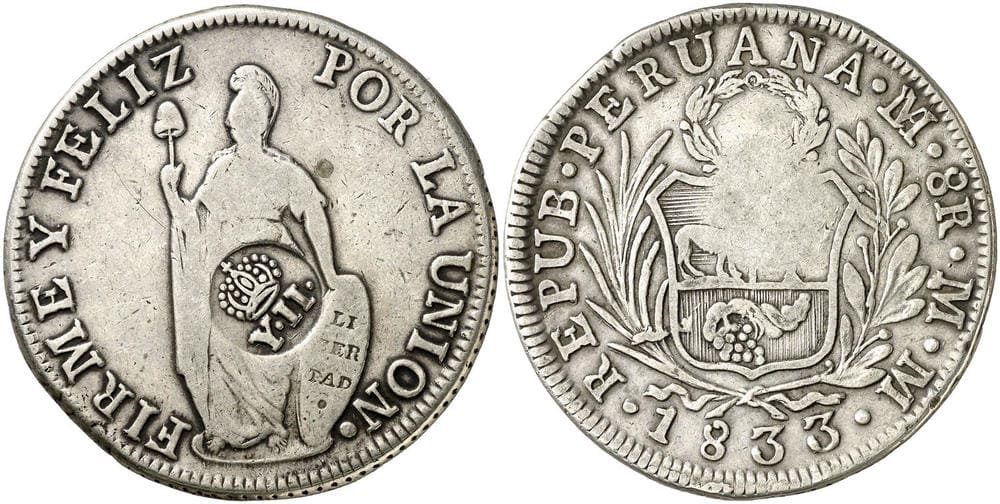
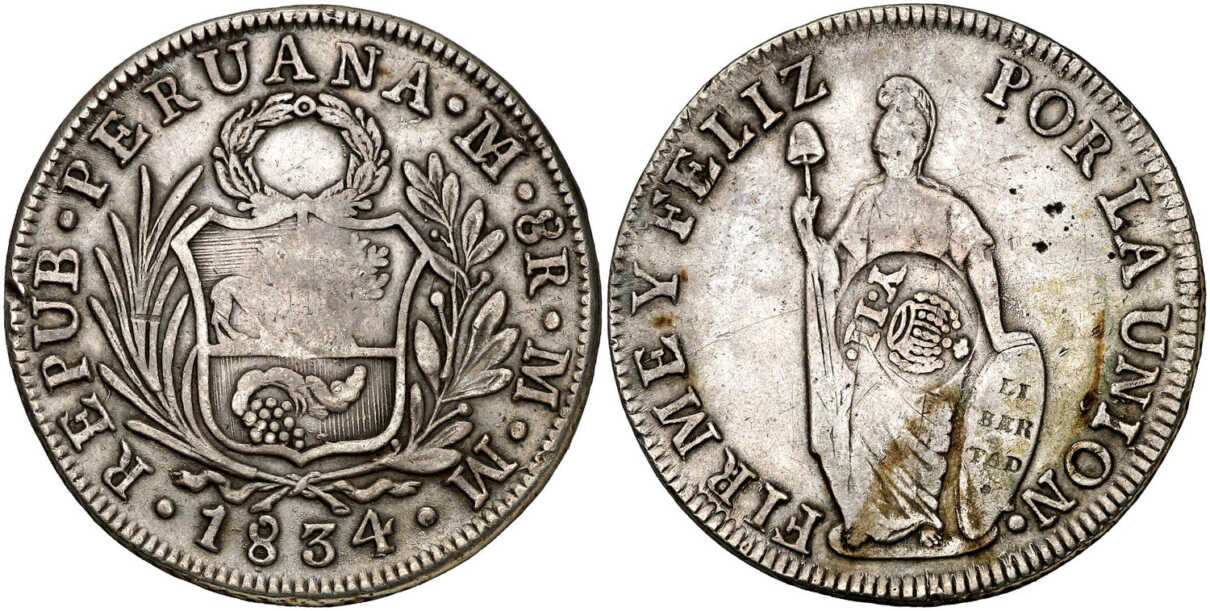
Bolivian Republic - Potosi
Bolivian Republic. 8 soles. Potosí. 1833. LM. Resealed by Fernando VII in Manila for circulation in the Philippines (1832-4)
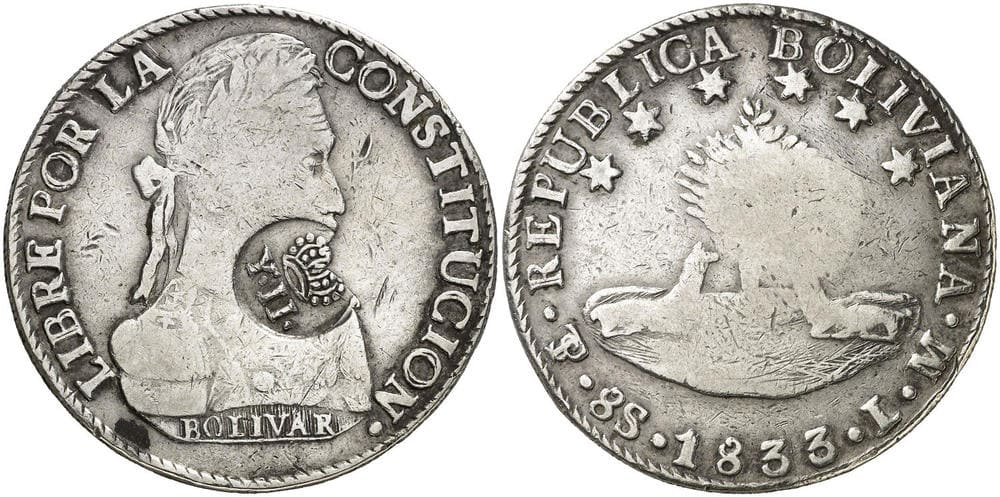
Republic of Mexico - Guanajuato
Coins Countermarked Philippines: Republic of Mexico. 8 reales. Guanajuato. 1830. MJ. Researched by Fernando VII in Manila for circulation in the Philippines (1834-7). Assayer MJ
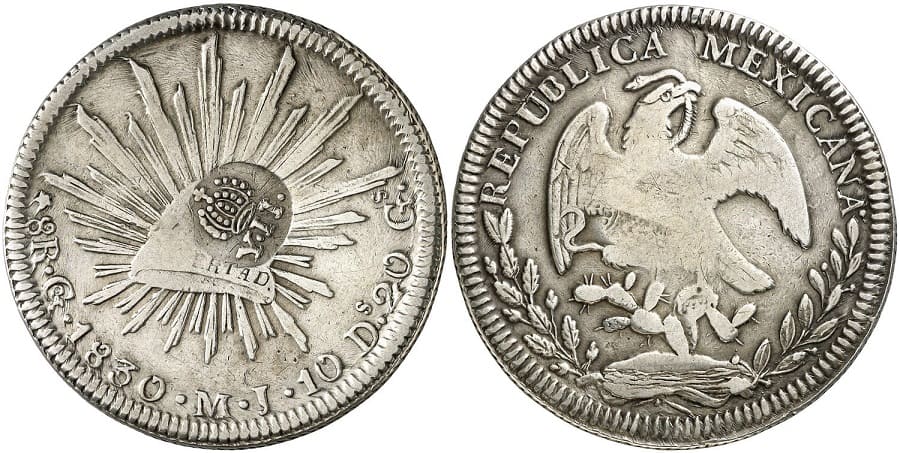
Republic of Mexico - Durango
Republic of Mexico. 8 reales. 1828. On an 8 reales of Durango of 1828. Resealed by Fernando VII in Manila for its circulation in the Philippines (1834-7).
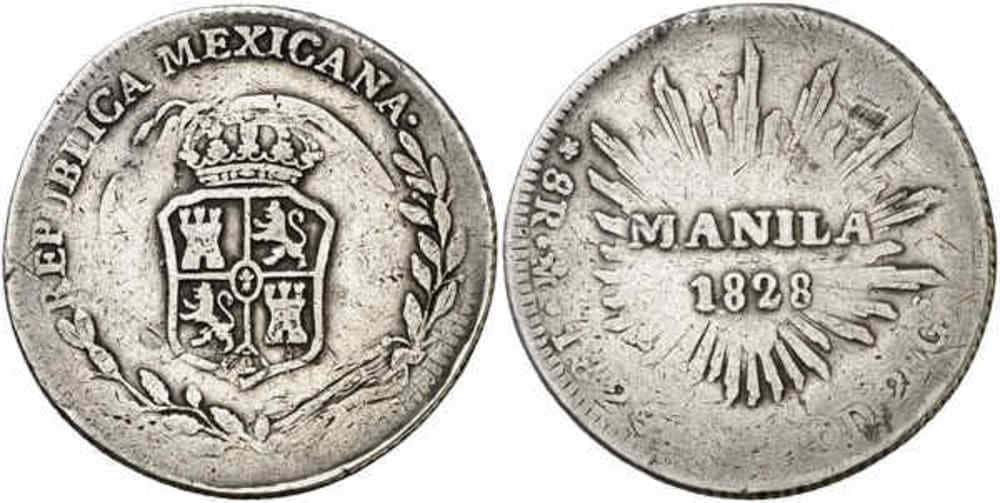
See another resealed coins: Museu Nacional D´Art de Catalunya
From 1810….
From 1810 the independentistas minted coins with types clearly differentiated from the Spaniards. As the American currencies of all securities circulated through the territory of the Philippines, the authorities realized the negative effect that these currencies could have there. Therefore, on October 13, 1828, the Captaincy General decreed that all coins should be resold with the following type:
On the obverse, the coat of arms of Spain with the legend; ENABLED BY KING N. S. D. FERN. Vii.
On the reverse, MANILA with the corresponding year that is almost always 1828.
Design of Coins - Assayers
Design was completed with a series of grooves engraved. on the obverse die that in principle would erase any trace of Republican legend. This was not so, this first type is known as type I and the same were coined the year 1828 and the very rare of 1830. From the year 1829 we know a 8 escudos.
The reverse remained the same but from the obverse disappeared any legend or drawing leaving only the coat of arms. Dr. Pablo I. de Jesus de Manila has written a study on this series for which he has found about 400 different copies.
Clearing the Revolutionary - Coins Countermarked Philippines
Past On October 13, 1828, D. Mariano Ricafort, Captain General of the Philippine Islands, a division of the Viceroyalty of Mexico, issued an edict introducing a system of marking the weights and ounces of gold produced by the “insurrect provinces and revolutionary governments “Of the South American continent. Thus, infamous words, such as “Republic”, “Independent” and “Free”, were eliminated.
The heavy machinery of the mint smoothed the designs of the offending coins and attempted to eliminate any trace of the original coin by minting “Manila -1829” on one side and the Spanish coat of arms on the other, with the legend “Enabled by King N.S.D. Fernando VII “and surrounded both wedges by a wide sawed edge.
Medal Carlos III 1782
José Gabriel Gil Assayer
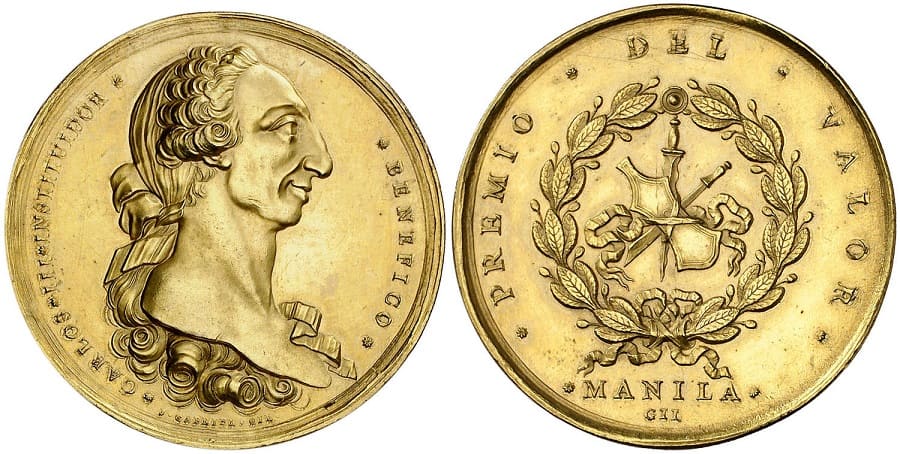
Local authorities clung to the hope that with these methods they could prevent the spread of the announcement of “Union and Freedom” carried out nineteen years earlier by the rebel provinces of Río de la Plata.
- “Union y Fuerza”, proclaimed ten years before By “Independence of Chile,” issued thirteen years earlier by Nueva Granada.
- “Por la Virtud y la Justicia,” proclaimed a decade earlier by Peru,.
- “Libre, Cresca, Fecundo” spread by the Central American Republic ( Guatemala ) only eight years ago , And the even more recent declaration of sovereignty of Bolivia “Libres por la Constitucion”.
Coins Countermarked Philippines: Circulation only in Phlipines
These coins did not circulate in Spain, and they did until its replacement by a currency of the Kingdom that is shown below. The mint of Manila only coined throughout its history copper (between 1728 and 1835 and the year 1861). Because this weight, in quantity of six million pieces and with types equal to the hard ones of Puerto Rico of 1895, was carved in Madrid, and transported to the Philippines where it circulated until in 1904 it was withdrawn from circulation by the American authorities.
1861 - Inauguration of Manila's Mint House - Philipines
1861 Isabel 2a Queen of Spain. Medal
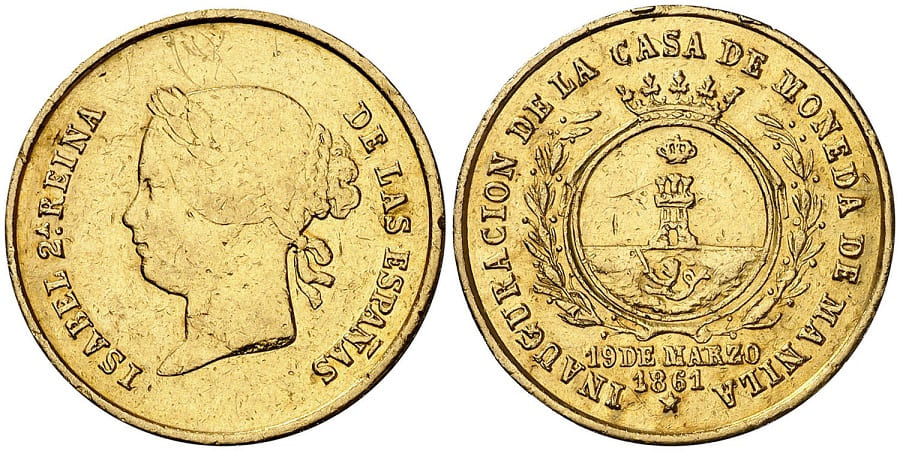
With Alfonso XIII the last pieces destined to Ultramar are minted with the values of 5, 10, 20 and 50 cents of weight. In addition, the so-called “alfonsino weight” is emitted in two issues, one of 1897 destined to circulate in the Philippines and another one of 1895 to circulate in Puerto Rico.
The latter had a divider of 40 cents. The “alfonsino weight” is equivalent to the 5 pesetas of the Metropolis. Alfonso XIII was king of Spain between 1886 and 1931, dying in the Roman exile in 1941.
Spain – Coined Manila. 50 cents in weight. 1868 Isabel 2a instead of II, Queen of Spain. Coins Countermarked Philippines
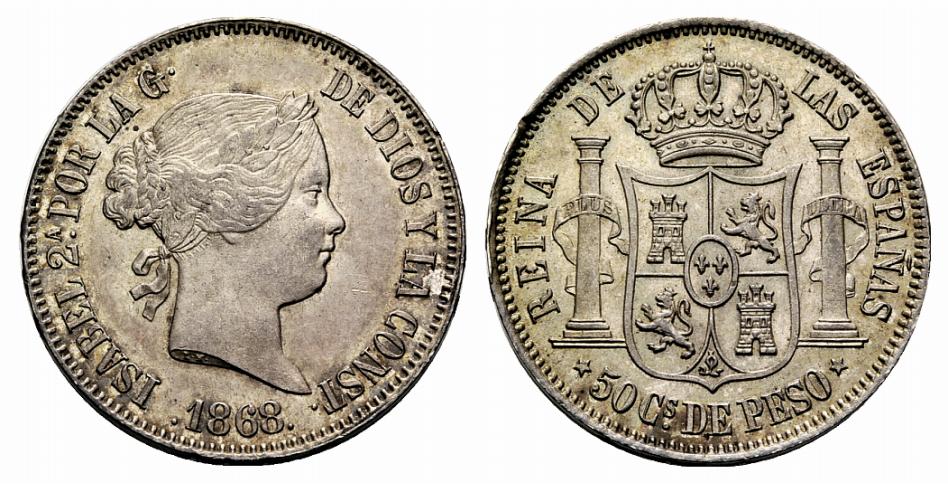
Philipine Coin Manila 50 Cents 1880 - Alfonso XII
Spain – Coined Manila. 50 cents in weight. 1880. Alfonso XII King of Spain. Coins Countermarked Philippines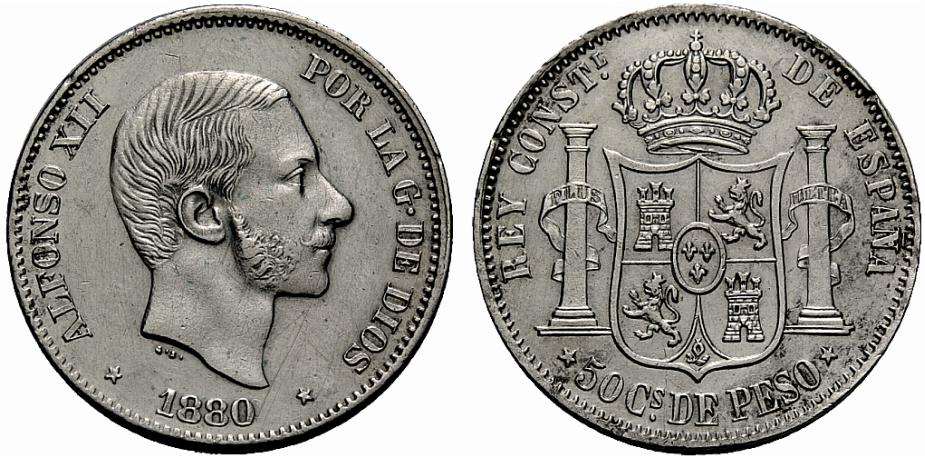
Alfonso XII – Coined Manila 20 Cents 1885
Spain – Coined Manila 20 Cents in weight. 1885. SGV (Arturo Sandoval and Antonio García González, assayers, Remigio Vega Vega, judge of Balance). Coins Countermarked Philippines
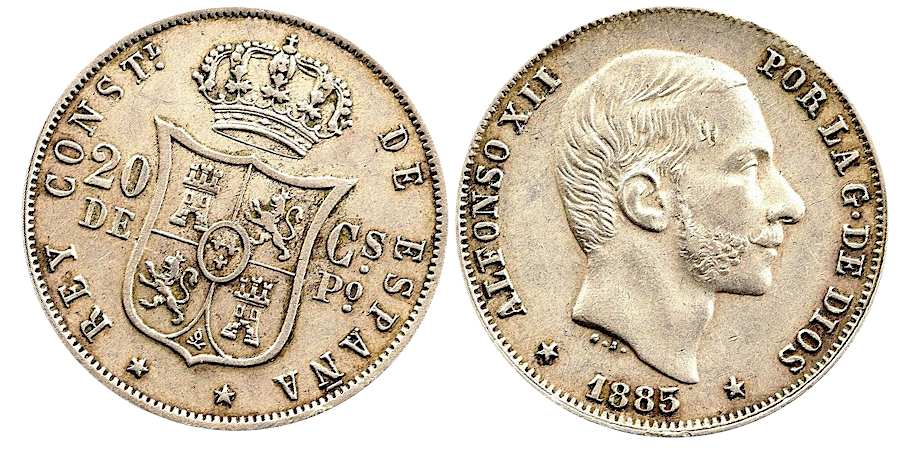
GUAM - 1899 Philippine Resealed Coin
In the year 1899, to leave testimony of the occupation of the island, the admiral of the fleet American F. V. Green used a countermark on Philippine island weights that contained the word "GUAM" and the year of occupation
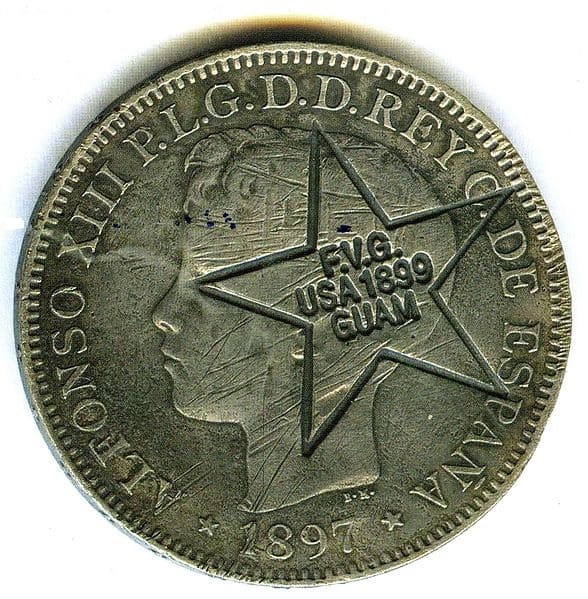
Related Post
- History of Tourism: Middle ages
- See another resealed coins: Museu Nacional D´Art de Catalunya
- Nespresso Coffee Maker
- See Argentina Ancient Coins
- Best Travel Blogs 2020
- e-Readers for tourist: Kobo aura & Onyx Boox
- Best travel Gadgets - More Info
- Luggage & Suitcases Travel
- Amazon prints & Posters - Products and Goods
- Real of Eight


